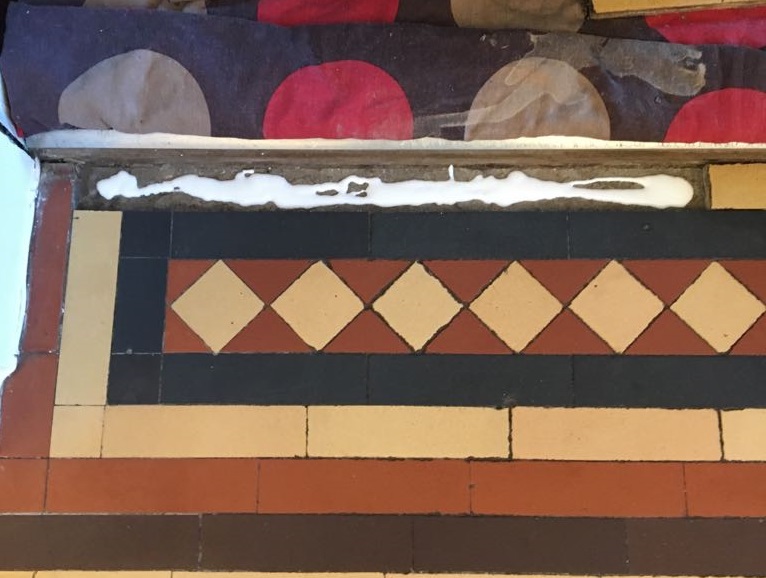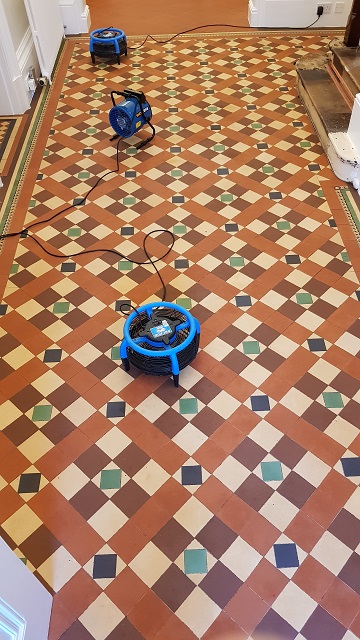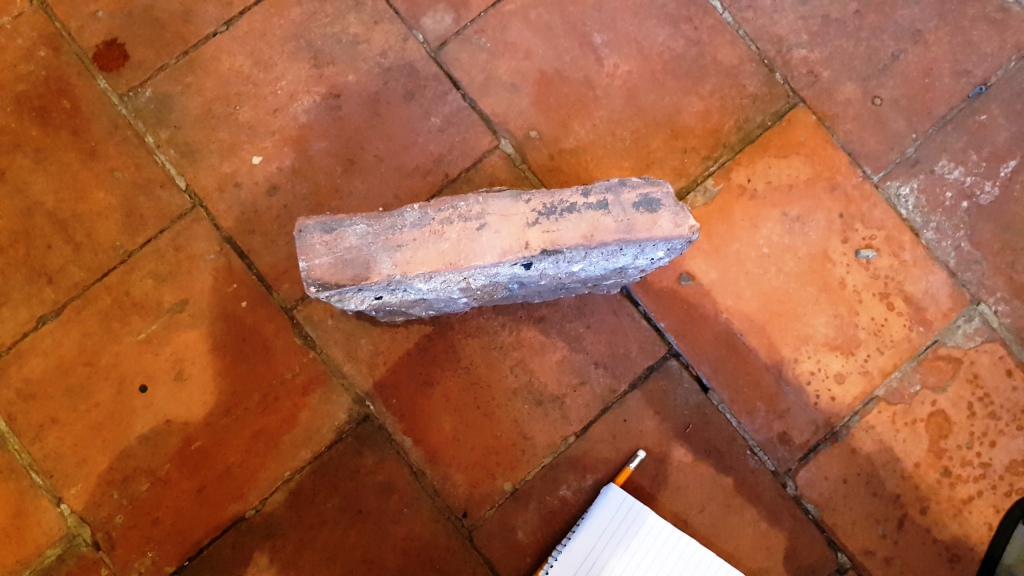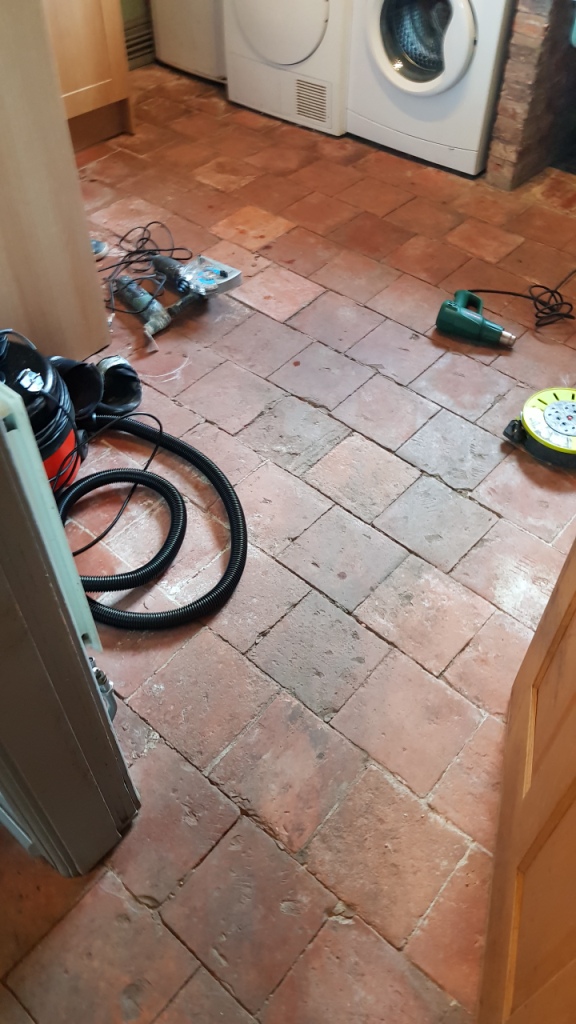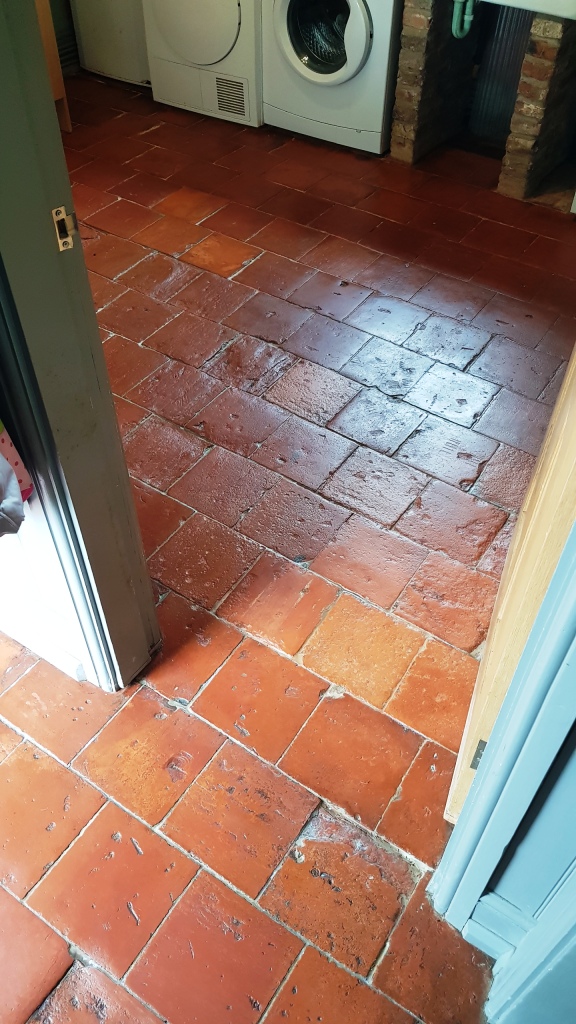Repairing and Restoring a Salt-Stained Victorian Tiled Hallway Floor in Sheffield
The owner of this tired and unloved Victorian Tiled Hallway in Sheffield was unhappy with its appearance and decided it was time to have it restored and looked at its best again. As well as renovating the appearance of the floor there was also a damaged area that needed pulling out and re-tiling to match.

The property and tiling dated back to the 1890’s and hadn’t been maintained in a long time; it is typical of a lot of property in the area which sprung up in the 1890s. At the time the city of Sheffield was devoted to work with chimneys dominating the skyline and population approaching 400,000 and rising rapidly. It pulled in workers from all around and was a time of great change as medieval street layouts were widened to accommodate trams and other vehicles
I visited the property to survey the floor and provide an accurate quote for doing the work. I could see there was an old sealer present on the tiles however this was now worn thin in places and was well overdue for replacement. Also, because it wasn’t a breathable sealer it was trapping moisture in the tiles which resulted in efflorescent white staining.

Efflorescence is often a problem on these old floors which don’t have a damp proof membrane to prevent moisture rising through the floor. It’s best to allow the floor to breath so moisture can evaporate at the surface, if it becomes trapped it can pool and reach out to the walls resulting in rising damp.
I worked out a plan to strip off what was left of the old sealer, clean the tiles, deal with the efflorescent staining, repair the broken tiles and finally seal the floor with a breathable sealer. My quote was accepted and a date agreed for the work to being.
Repairing a Victorian Tiled Floor
The first job was to repair the areas of damage using replica tiles that I had managed to source the week before. There are several companies you can go to for replicas and these were chosen for their matching colour.

The loose and cracked tiles were carefully removed and cleared away, then the replicas were cut to fit the empty gap and once I was happy, they were laid in place with a flexible adhesive which would allow for some movement.
Deep Cleaning a Victorian Tiled Hallway Floor
To strip off what was left of the old sealer the tiles were sprayed with a dilution of Tile Doctor Remove and Go, this is a strong treatment that breaks down floor coatings. After ten minutes a rotary machine fitted with a very coarse 200-grit diamond pad was run over the floor to work the remove and go into the floor.

The slurry generated was then removed with a wet vacuum and the tiles inspected and any stubborn areas which were then retreated.
Next step was to counter the efflorescent salt problem by applying Tile Doctor Acid Gel which being an acid neutralises the alkaline salts and removes other problems such as grout smears. The gel was worked in using a 200-grit diamond pad fitted to the rotary floor buffer. Afterwards it was removed with the wet vac and the floor was wiped clean with slightly acidic water.

Sealing a Victorian Tiled Hallway Floor
The floor was left to dry off for several days, before returning to apply the new breathable sealer. Beforehand the floor was tested with a moisture meter to ensure it was fully dry.
The readings were fine so the floor was sealed with Tile Doctor Seal & Go Extra which is a full breathable sealer and gives the floor a nice satin finish. Nine coats of Seal and Go Extra were applied in total.

Once done the floor looked brand new and my client was very pleased. The new sealer also blended in repaired section of Victorian tiles with the original.

For aftercare cleaning I recommended the use of Tile Doctor Neutral Tile Cleaner. Most of the tile cleaning products you find in supermarkets are simply too strong for the sealer and can degrade them prematurely.

Professional Repair and Restoration of a Victorian Tiled Hallway in South Yorkshire
Repairing and Restoring a Salt-Stained Victorian Tiled Hallway Floor in Sheffield Read More »





